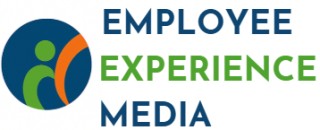
Understanding Remote Employee Tracking
Embracing Efficient Employee Monitoring in Remote Work
Remote employee tracking has become a cornerstone in today's flexible work environment. As organizations transition to remote work, the need for effective employee monitoring systems has intensified. Companies now utilize various tools and software to ensure productivity, maintain data security, and ensure the seamless flow of operations. The employment of monitoring tools ranges from basic time tracking software to sophisticated solutions that provide real-time insights into employee activities. These tools help managers understand how remote employees allocate their time, detect potential risks, and ensure compliance with work standards. However, while effective monitoring is crucial, it is equally important to maintain the trust and privacy of employees. This creates a need for well-balanced strategies that prioritize the dignity and autonomy of individuals while addressing security concerns. For businesses aiming to enhance their remote workforce management, a comprehensive guide on embracing efficient monitoring practices is invaluable. Companies must be cautious about the privacy implications of tracking processes and seek to achieve a balance that fosters trust and cooperation. As the demand for remote work grows, understanding the nuances of effective employee monitoring can significantly enhance the employee experience. For those looking to dive deeper into optimizing remote work settings for enriched employee engagement, check out this enhancing employee experience in remote work settings article.The Challenges of Data Leak Prevention
Navigating the Complexities of Data Protection
In the era of remote work, safeguarding sensitive data has become a critical priority for organizations. As employees increasingly connect to corporate networks from different locations, data leak prevention measures are paramount. The risk of data breaches magnifies when employees access company data over unsecured networks. It's imperative to develop comprehensive strategies for data protection.
Data security involves implementing effective monitoring tools that provide real-time oversight over remote employees' activities. These tools are designed to track access to sensitive information and ensure compliance with data protection policies. By using monitoring software, organizations can identify potential threats and mitigate the risk of data loss before it escalates.
However, the use of such technologies should be balanced with employee privacy considerations. While protecting against data leaks, it's crucial to foster trust and maintain employee engagement. Emphasizing best practices in monitoring ensures that companies protect sensitive data while respecting employees' privacy rights.
Moreover, this protection strategy should align with comprehensive data management processes, including timely updates and regular audits, to counteract emerging threats. An effective data leak prevention framework will reduce security risks, ultimately enhancing the overall employee experience in remote work settings.
Balancing Privacy and Security
Ensuring a Safe Balance Between Privacy and Security
When it comes to remote employee tracking, finding the right balance between ensuring data security and respecting employee privacy can be challenging. Companies need to monitor employee productivity and protect sensitive data without compromising trust. This balance is crucial, not just from a compliance standpoint, but also for maintaining a positive employee experience.
Organizations must employ monitoring software that provides real-time insights into employee work activities. However, it's important that these tools focus on task monitoring rather than intruding on personal spaces. Clear policies should be established to outline what information will be tracked and how it will be used. By doing so, employees can be assured that their privacy is being respected while data security needs are being addressed.
Employee monitoring practices should adhere to best practices to prevent data breaches and data loss. This includes limiting access to only those employees who need it, implementing data protection measures, and regularly reviewing access rights. Comprehensive guides on security and transparent communication help align monitoring efforts with privacy concerns.
Risk management is another essential aspect of this equation. Loss prevention tools and leak prevention strategies must be in place to mitigate potential threats. Implementing multilayered security solutions takes the burden off employees while keeping security robust, thus integrating seamlessly into the everyday work environment.
Ultimately, balancing privacy and security not only protects company data but also enhances employee engagement by fostering a culture of transparency and trust. To achieve this balance effectively, organizations can refer to a comprehensive guide on successfully integrating security measures with employee well-being in mind.
Impact on Employee Experience
Striking the Balance Between Security and Privacy
In the quest to protect sensitive data from breaches and unauthorized access, organizations are increasingly deploying robust security measures. However, this concern for security must be balanced with respect for employee privacy to foster a positive employee experience in remote work environments. When monitoring remote employees, it's essential to implement security protocols that do not feel intrusive. Using monitoring tools that focus solely on data security and performance metrics, rather than personal information, can help maintain trust between employees and management. Additionally, clear communication about the purpose and extent of monitoring can alleviate employees' concerns about privacy invasion. Best practices suggest limiting access to sensitive information only to those who require it for their tasks, thereby reducing data leak risks while respecting employee autonomy. Comprehensive compliance measures should be in place to ensure that access and monitoring activities comply with data protection regulations. Remote workers should be involved in discussions about the security measures implemented, creating a collaborative environment where concerns can be voiced and addressed. Employee engagement initiatives, such as regular feedback sessions and transparent reporting on data protection efforts, can enhance trust and collaboration. Maintaining a balance between security and privacy in remote settings not only safeguards vital business information but also preserves and even boosts employee productivity and satisfaction. With the right strategies and tools, companies can secure their data while offering a respectful and empowering remote work environment. This careful equilibrium ensures that employees feel valued and trusted, ultimately driving engagement and commitment in their roles.Technological Solutions and Tools
Technological Tools for Enhanced Security
In the realm of remote work, leveraging the right technological tools is crucial for ensuring data security and effective employee monitoring. These tools not only help in tracking productivity but also play a vital role in data protection and loss prevention.
Monitoring Software and Its Role
Monitoring software is essential for tracking employee activities in real time. It provides insights into how remote employees are spending their work hours, which can be crucial for time tracking and productivity management. However, it's important to balance this with privacy considerations to maintain employee trust and engagement.
Data Protection and Leak Prevention Tools
Data protection tools are designed to safeguard sensitive information from unauthorized access and potential data breaches. These tools often include features for data leak prevention, ensuring that sensitive data remains secure. Implementing these tools is a key step in minimizing risk and enhancing overall data security.
Comprehensive Management Solutions
Comprehensive management solutions integrate various aspects of employee monitoring and data protection. These solutions offer a holistic approach, combining monitoring tools with security features to ensure compliance and protect against data loss. By adopting such solutions, organizations can effectively manage remote workers while safeguarding sensitive information.
Best Practices for Implementation
- Ensure transparency with employees about monitoring practices to foster trust.
- Regularly update security protocols to address emerging threats.
- Provide training for employees on data security best practices.
- Implement access controls to limit exposure of sensitive data.
By focusing on these technological solutions and best practices, organizations can strike a balance between security and employee experience, ultimately leading to a more productive and secure remote work environment.











